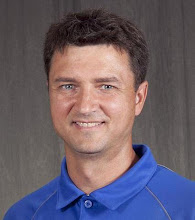I had to work many years to develop a second serve that I could trust. I used several visualizations to get there. One of the more powerful ones is to imagine my racquet face being horizontal to the ball at the point of contact rather than up and down. Normally, we imagine the racquet standing straight up and down (vertical) as we hit serves and overheads. In the case of hitting a topspin serve, we can imagine the racquet in a horizontal position (like for a groundstroke) that brushes up on the ball, to give it topspin. Below is a video that takes this visual to the extreme and even has some drills to practice the motion.
Tom Avery Topspin Serve
https://www.youtube.com/watch?v=rJqqY8FDQao
http://youtu.be/SsPLPV_EcG4?t=5m57s
I am careful to call this a visualization. If you watch second serves in slow motion, the racquet is not in a horizontal position when it contacts the ball, but it is close.
With this in mind, watch this video that shows modern players hitting topspin serves:
Lloyd Second Serve Lesson
https://www.youtube.com/watch?v=l2keKndmKGo
You can also compare this to Bill Tilden and his pupil back in the days when the American Twist was being invented. I'm especially impressed with his student's racquet motion.
Bill Tilden
http://youtu.be/EUA3Yb66YSQ?t=7m
To get your racquet in the proper position to where it will snap from a horizontal position that contacts the ball in a way to impart topspin is the key. It will take practice and visualizations. What seems like a big change to you is probably a little change to your swing in reality.
Note that Bill Tilden says that your arm needs to finish out to the right instead of coming across the body to the left.
If you want to examine a topspin serve in slow motion, here are some good videos.
Slow Motion Topspin Serve
http://www.youtube.com/watch?v=_n3C8AkV7E4
http://www.youtube.com/watch?v=2hGS03eFzi0
Notice where the arm ends for the server in the slow motion video.

A pro who coached Andy Roddick a little when he was young once told me that at 9 he could hit a kick serve that would bounce over your head. Let's look at his second serve in slow motion.
Andy Roddick Topspin Serve
https://www.youtube.com/watch?v=DTlotcSxM2I
Just like Big Bill says, on an American twist serve the arm ends on the right side of the body. To achieve this will require pronation. Pronating your wrist allows the ball to go toward the target but your arm ends off to the right. After I watched the Nick Bollettieri video below and practiced it, I started hitting big kicking American twist serves!
Nick Bollettieri Pronation Practice
http://youtu.be/CIpKx36_ork?t=1m48s
Summary
Now that you know what to look for, watch all of these videos again. Then practice. Then watch the videos again. Then practice some more. You get the idea. Here's a checklist for hitting a kick serve.
- Pronate your wrist (Bollettieri).
- Brush up on the ball with the racquet more horizontal (Avery).
- Focus on your arm finishing off to the right. (Tilden)
- Toss the ball over your head (Avery, Lloyd, Tilden).
- Arch your back (Roddick).
- Bend your knees and explode up and into the court (Roddick).
